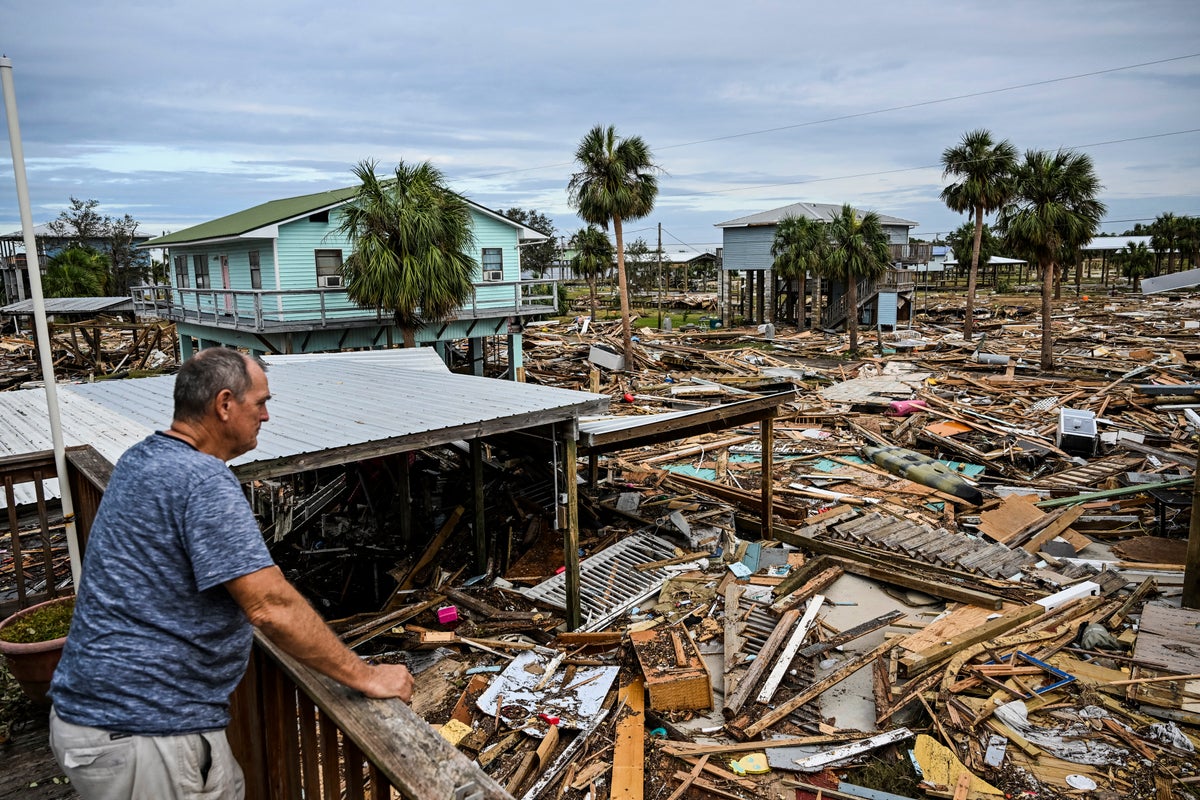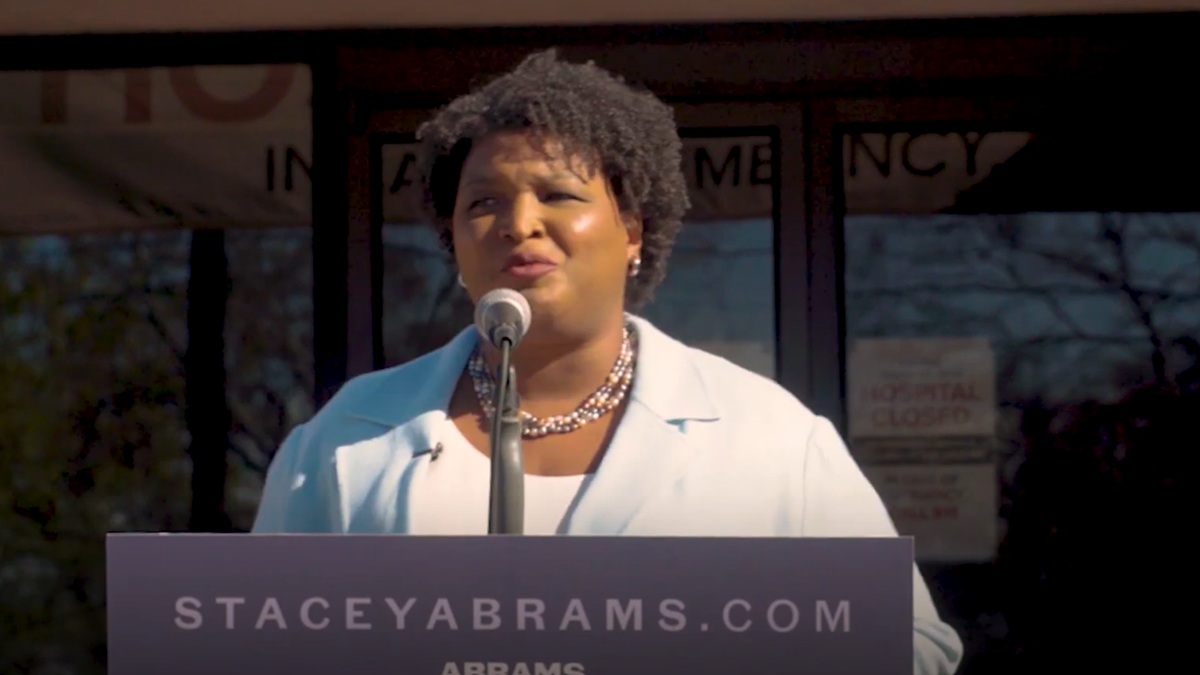CLIMATEWIRE | The conservative blueprint for a second Trump administration calls for weakening the government’s response to disasters by slashing public rebuilding money and dissolving federal flood insurance.
That could deprive survivors of disasters like Hurricane Helene of the financial help they need to rebuild their homes as rising temperatures and expanding development magnify the costs of catastrophes across the United States.
Project 2025, the sprawling policy playbook written by allies and past advisers of former President Donald Trump, would terminate disaster-preparation grants, stop or reduce aid after smaller and more prevalent disasters and phase out the program that provides almost all of the nation’s flood insurance under the Federal Emergency Management Agency.
On supporting science journalism
If you’re enjoying this article, consider supporting our award-winning journalism by subscribing. By purchasing a subscription you are helping to ensure the future of impactful stories about the discoveries and ideas shaping our world today.
“You’re gutting FEMA,” said Brett Hartl, government affairs director with the Center for Biological Diversity Action Fund, which has endorsed Vice President Kamala Harris in the presidential election.
“The poorest among us would never have access to flood insurance. They would be left out, totally out of luck and not be able to rebuild,” Hartl said of the proposal to end the National Flood Insurance Program and leave flood coverage to the reluctant insurance industry.
The devastation caused by Helene is raising new questions about the disaster policies that Trump might adopt if he wins the election. His campaign renewed its efforts to distance Trump from Project 2025 in the wake of the hurricane and as his opponent, Vice President Kamala Harris, leveled attacks against Republicans who proposed limiting disaster aid.
Harris’ campaign highlighted the sprawling document Friday as Helene raced across the southern U.S. with deadly downpours, posting a video titled, “Project 2025 author and former Trump official says their plan is to cut assistance for hurricane victims.”
It shows Ken Cuccinelli, a former Trump senior homeland security official who wrote the section about FEMA, saying the goal is “shrinking FEMA and focusing on its mission of backing up states. People think of it as a first responder. It’s not a first responder.”
Project 2025 says FEMA should “focus on large, widespread disasters.”
Trump campaign senior adviser Danielle Alvarez said in a statement to POLITICO’s E&E News that the former Republican president has “made it clear that only President Trump and the campaign, and NOT any other organization or former staff, represent policies for the second term.”
Project 2025 devotes only two of its 922 pages to FEMA. Other sections suggest shrinking or dismantling the National Weather Service and commercializing the forecasts it now provides for free.
“Americans rely on weather forecasts and warnings provided by local radio stations and colleges that are produced not by the NWS, but by private companies such as AccuWeather,” Project 2025 says.
Yet private weather companies including AccuWeather frequently rely on National Weather Service data to inform their own products.
Michael Mann, a prominent climate scientist at the University of Pennsylvania, said dismantling the weather service “would create all sorts of confusion, uncertainty, disruption” around NWS’s National Hurricane Center, which predicts and tracks tropical cyclones.
“The idea that NHC could continue to fulfill its mission is absurd,” Mann said.
‘Unrealistic goal’
The most dramatic disaster proposal in Project 2025 would be ending FEMA’s flood insurance program. The document calls for replacing it “with private insurance starting with the least risky areas currently identified by the program.”
“It’s an unrealistic goal,” said Chad Berginnis, executive director of the Association of State Floodplain Managers. “There are areas where the private market [for property insurance] is all but nonexistent because of the hazards that are there.”
FEMA’s National Flood Insurance Program was created in 1968 after private-sector insurers refused to cover flood damage. Now, it provides almost all flood coverage in the U.S. and has paid $80 billion to repair properties, FEMA records show. Flood coverage is bought separately from homeowners’ insurance.
“The private sector doesn’t want it,” said Craig Fugate, who led FEMA during the Obama administration, referring to flood coverage.
Carolyn Kousky, a leading expert in flood insurance and a vice president with Environmental Defense Fund, said that eliminating the insurance program “would be devastating to millions of households around the country who would then lack the financial resources needed for recovery.”
Congress and FEMA have taken steps in recent years to encourage insurance companies to offer flood policies. A FEMA program launched during the Obama administration and revived by the Biden administration after Trump delayed it is sharply raising FEMA’s flood premiums, making them similar to rates charged by private insurers.
Joshua Sewell, policy and research director at Taxpayers for Common Sense, said the Project 2025 plan for FEMA “is an area where ideological desire seems to overpower political pragmatism” and “over simplifies a very complex and critical challenge.”
Skyrocketing disaster costs
The proposed FEMA overhaul comes as the agency has struggled to pay costs and says it cannot repay $20.5 billion it borrowed from the U.S. Treasury after a trio of devastating hurricanes in 2017.
FEMA’s struggles have resulted in part from Trump and his decision as president to declare each state a major disaster in 2020 due to the pandemic, an unusual move that tested the limits of disaster law while draining tens of billions of dollars from the fund FEMA uses to help communities rebuild after catastrophes.
FEMA’s growing costs have brought scrutiny from government auditors and raised concerns that the agency is spending too much money and time on weather-related events that cause only a few million dollars in damage and could be handled entirely by a state. E&E News reported in 2019 that FEMA had wasted more than $3 billion in disaster aid and misused thousands of employees by responding to smaller disasters.
“For a long time and increasingly so, those [disaster] costs have been borne by the federal government. We know that states and communities need to be carrying their share not only of costs but actions that can reduce risks,” said Berginnis, of the Association of State Floodplain Managers.
Under both the Obama and Trump administrations, FEMA proposed overhauling disaster aid to reduce the flow of money to states after the least-costly weather events.
One Project 2025 idea is taken directly from a FEMA proposal in 2016 under the Obama administration.
Fugate, the FEMA administrator at the time, said he “wanted to build incentives” for states to reduce future damage by adopting stricter building codes.
The idea died after it generated widespread opposition from states.
Hartl acknowledged that “not every single thing in Project 2025 is a truly radical thing.”
But in the case of eliminating or minimizing FEMA aid after small disasters, Hartl said, “All you’re doing is making it harder for communities to recover.”
Fugate said “other things” in Project 2025 “are more troubling,” such as eliminating annual grants to states that began after the terrorist attacks of Sept. 11, 2001, to improve domestic security and preparedness.
“A lot of mobile communications systems and search-and-rescue teams — that’s what you’ve been buying with these homeland security grants,” Fugate said.
Reporter Avery Ellfeldt contributed.



























































